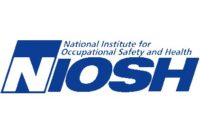NIOSH to research chemical exposures and birth defects

To learn whether exposure to potentially hazardous chemicals in the workplace increases the risk of birth defects, National Institute for Occupational Safety and Health (NIOSH) researchers are partnering with the Centers for Birth Defects Research and Prevention (CBDRP) on one of the largest birth-defects prevention research efforts in the nation. NIOSH researchers hope to address some key questions:
- Which workplace chemicals contribute to specific birth defects?
- What level of chemical exposure contributes to birth defects?
- When is chemical exposure likely to cause birth defects?
- What workplace factors other than chemical exposure might be involved?
The CDC’s National Center on Birth Defects and Developmental Disabilities is funding and coordinating the research. The first part, called the National Birth Defects Prevention Study (NBDPS), collected information from voluntary participants about health and lifestyle, including their work before and during pregnancy. Between 1997 and 2011, more than 30,000 mothers of babies with birth defects, identified through population-based birth defects surveillance systems, and 10,000 mother of babies without birth defects participated in the study.
A connection
Recent findings from the study suggest that work-related exposure to fungicides, insecticides, and herbicides are unrelated to most birth defects of the heart that are included in NBDPS. However, researchers found a connection between a few rare heart birth defects and above-average exposure levels to some of these pesticides. For example, mothers of children with one type of birth defect were 5 times as likely as mothers of children without birth defects were to have encountered higher doses of insecticides and herbicides. This birth defect, called hypoplastic left heart syndrome, impairs normal blood flow through the heart.
The study included diverse occupations, including those involved in chemical production and use, such as agriculture, landscaping, lawn care, and pest extermination. Researchers estimated exposures using factors that include the levels of exposure typically associated with specific types of job tasks performed by the women, how long the women held their jobs, and how many hours per week they worked—from 1 month before pregnancy through the end of their first trimester.
Other factors considered
Researchers continue to investigate which specific chemicals and exposure levels may have contributed to an increased risk for this heart birth defect. They have also studied whether other factors, such as family history of heart birth defects or the mother’s age, may have played a role.
These investigations have helped inform the occupational questionnaire modules of a related study, the Birth Defects Study to Evaluate Pregnancy exposureS (BD-STEPS). For this study, voluntary participants will answer questions specific to their occupation and workplace, as well as general questions about health and lifestyle. With this information, NIOSH and CBDRP researchers will be better able to assess the level and timing of chemical exposures. This is the first step in identifying and preventing birth defects related to chemical exposure at work. As the researchers learn more about how workplace exposures affect pregnancy, they share this information with their colleagues by publishing scientific papers in peer-reviewed journals, and they inform the public on the NIOSH Reproductive Health and the Workplace and partners’ webpages.
To learn more, visit these websites:
NIOSH Reproductive Health and the Workplace
National Birth Defects Prevention Study
Birth Defects Study to Evaluate Pregnancy exposureS
National Center for Birth Defects and Developmental Disabilities
Looking for a reprint of this article?
From high-res PDFs to custom plaques, order your copy today!









